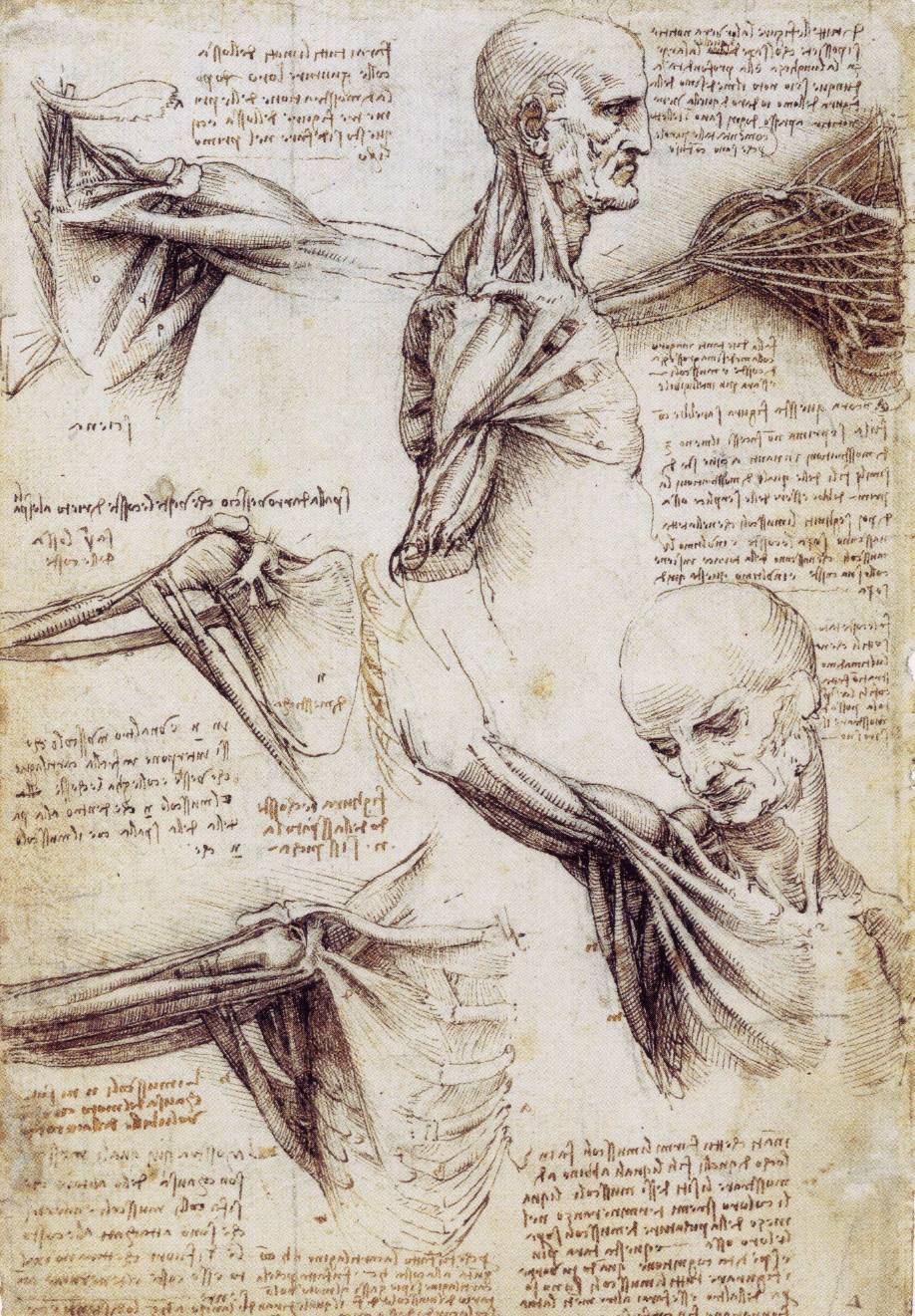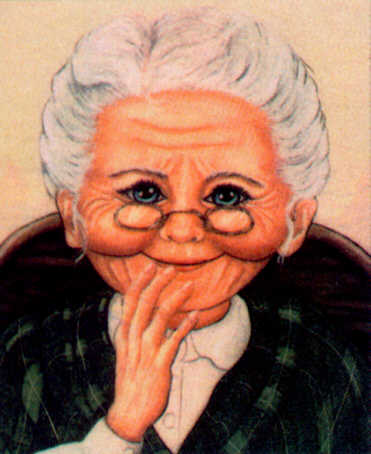
Monday, September 29, 2008
A word from the wise...
"Forget about grades . Most of you were in the top 5% of your undergraduate class or you wouldn’t be here. After the first quiz, half of you will be in the bottom half of this class. For some students this can be very traumatic. Let it go. Do the best you can, stay caught up and remember that you are not studying anatomy to get into med school. You’re already here - congratulations. You’re studying anatomy to learn the language of medicine and to care for patients. Later on you’ll have plenty of opportunities to pick up the things you miss or don’t fully understand here."


Wednesday, September 24, 2008
Shake what yo momma gave ya! My first drawing assignment.
Saturday, September 20, 2008
Interesting!

Yo so!...
Apparently the new hip thing going on in my world are mini-med lectures. Mini-med lectures are lectures that are given at various colleges/universities that touch on a variety of topics related to science and medicine. For example, robots. Like, terminator 3-esque. Ok, not that advanced but still very cool nonetheless. I attended a mini-med lecture about a week ago on robot surgery and it has still stuck with me, enough to write about it here.
Let me go on. In going along with the worldy monopolies that we know and love, only one company in the world manufactures 'da Vinci Surgical Robotic Surgical System.' (The lowercase 'd' in 'da Vinci' is correct!) The surgeon sits at a computer-like hub station, a few feet from the patient and uses small handles to direct various robotic 'hands' in performing the surgery. The pros with such an extremely minimally invasive surgery ends up typically (TYPICALLY!) being the minimization of routine complications obtained from more classic open surgery such as recovery time, blood loss, lost surgery equipment (!) etc etc. There was actually a da Vinci system at the lecture for the public to use, and let me tell you it was saaaa-weet to sit there and pretend I was operating on a real human! Just kidding, it was in a lobby and we basically grabbed little rubber cones and played around with them. Actually, cool side note, the surgeon giving the lecture showed a video that a resident made when practicing her skills with the da Vinci robot hands by making an origami swan. Watch this thing, tis crazy. Ok so the video won't upload, so here it is if you want to watch it. http://www.youtube.com/watch?v=x9Bjs99A0k0
But if you don't want to waste one minute, the point of the story is that at the end, one thinks this origami she made had to be, the size of one's fist or something, but it ends up being half the size of a penny! Crazy-town! The robotic hands are that capable even though they are centimeters wide! Go da Vinci!
But I digress. The cool thing about mini-med lectures is the opportunity for med students, health students, the public, the laymen, you name it, to be exposed to the frontiers of science in tons of various topics. They are also very affordable; the lecture series I am currently signed up for at Loyola amounted to $40 for 8 lectures, with one's commitement to how many one attends completely voluntary, but I found that most lectures at other schools end up costing nothing. (What the heck Loyola?) The schedules of the lectures are typically held once a week, for a couple months span at convenient evening hours. Anyways, forgive my da Vinci propaganda, it was just very cool! Moving on...
For Medical Illustration students in particular, the knowledge and coverage given to such a wide range of topics ends up being priceless for helping to pin down, or just even hint at possible fields one would potentially like to end up being in. Being that medical illustration has so many wide applications, it typically is hard to hone in on an area of medicine that one can spend their life's work on. That's why the lectures end up being so fascinating and valuable. This week's lecture is titled, 'The Bionic Human,' so no doubt that will be interesting as hell...but the following lectures touch on more common topics such as Alzheimer's and Genetics, and end up informing the public on the most current research in the field. I figured I'd share this information and if you happen to google 'Mini-med lectures,' you can surely find something reasonably close and affordable for you!
In the end, it supplies a lot more interesting job possibilities then illustrating textbooks. Yuck.

Thursday, September 18, 2008
That's right!

Da Vinci, 1492.
"I counsel you to not cumber yourself with words unless you are speaking to the blind. If however notwithstanding you wish to demonstrate in words to the ears rather then to the eyes of men, let your speech be of things of substance or natural things, and do not busy yourself in making enter in the ears things that have to do with the eyes, for in this you will be far surpassed by the work of the painter."
"I counsel you to not cumber yourself with words unless you are speaking to the blind. If however notwithstanding you wish to demonstrate in words to the ears rather then to the eyes of men, let your speech be of things of substance or natural things, and do not busy yourself in making enter in the ears things that have to do with the eyes, for in this you will be far surpassed by the work of the painter."
It is the visual.

For more Da Vinci drawings, I urge you to go here: http://www.drawingsofleonardo.org/
I am honored...

I learned today that my female cadaver was 100 years old when she died from cardiac arrest, or some other cardiovascular problem.
100!
You go girl.
Monday, September 1, 2008
Just like the movies.

That's me on the left, by the way.
One of the most intense classes we as a class are required to take is Gross Anatomy. That entails anatomy that is visible to the naked eye, no microscopes! no microbiology here! This class therefore employs the use of cadavers to educate the Biomedical Visualization, Dental and Post-Baccalaureate students in the wonderful ways of the human body. It is all very exciting.
One of the most intense classes we as a class are required to take is Gross Anatomy. That entails anatomy that is visible to the naked eye, no microscopes! no microbiology here! This class therefore employs the use of cadavers to educate the Biomedical Visualization, Dental and Post-Baccalaureate students in the wonderful ways of the human body. It is all very exciting.
Now a little about these cadavers.
1) All of the cadavers have donated their bodies to science (no strays, homeless, stolen or diseased people here!) This was not always the case...Interesting side-note I read in Somethings Fierce and Fatal, by Joan Kahn, a book of creepy interesting tales.
"Around the late 1800's, grave-robbing was a nation-wide horror. Illinois, like many states, had no law against the stealing of bodies, although it had a statute against selling of corpses. Under these conditions medical colleges were in a desperate fix, since they had to find cadavers for their classes to dissect. There was only one thing to do, buy bodies from men who came to the back door at midnight with mysterious sacks which they exchanged for so much money down and no questions asked. Ghouls, as the grave-robbers were called, had become the terror of rural communities, and friends and relatives of bereaved families patrolled cemeteries for nights after burials, shotguns in hand."
So that's good, no ghoulish sketchy exchanges. All legit yo.
2) Your cadaver is either female or male, and they are given without preference. "A number 1 on the tag means female. A number 2 means male." My table obtained a female. The pro about this is that in my first lab dissection I had some mammary glands to work with, which was quite interesting to see.
3) Formaldehyde. "Formaldehyde-based solutions are used in embalming to disinfect and temporarily preserve human remains. It is the ability of formaldehyde to fix the tissue that produces the tell-tale firmness of flesh in an embalmed body. Whereas other heavier aldehydes produce a similar firming action none approaches the completeness of formaldehyde."
It smells. It sucks. It makes you feel nauseous. And it makes you hungry. Yes, hungry. Second year student comes up to me and says, "So were you starving after your first lab?" I say, "Yes, famished." And she informs me that formaldehyde has the odd ability to make you hungry.
The chemical compound has that effect. Could be completely made up, but I've heard it from many, so eat something before you go in! Catch 22 man...3. Latex gloves are required. So are scalpels, obviously. Both of which you must change about every 10-20 minutes....The blades obviously get dull quick, with the whole cutting dead skin and all, and the gloves make one's hands numb. I walked out of my dissection lab, after 3 hours of dissecting the arm and forearm, and for 45 minutes afterwards my hands were tingly and my fingers numb.
4. Bone boxes. Boxes O' Bones. At the beginning of our first lab, we were each, as a group, given a box full of human bones to study for tests/sketching assignments. A human skellyton (excluding the skull and vertebrae) all for ourselves! Excellent source of material EXCEPT for the fact that they are like, 50 years old, and one has no idea if the indentations and notches in the bones are natural, or just chips from being in a bone box with 15 other boney pieces, and lugged all over campus. Still, sa-weet!
5. Dissecting is awesome. You stare at someone's armpit (axilla region) and all of a sudden 4 hours fly by. Like when I paint. No concept of time, and it makes you look at your body (and humans in general) in a new light. Laying in bed the other day, I started visualizing where all my arteries, veins and muscles lie. Feeling for my external occipital proturbance (the back of your skull) I felt like a scientist, a doctor, a medical illustrator... which could only mean good things...
And lastly, a terrible dissection misshapes that I thought would be nice to share.
1. "A little blob of cadaver juice splashed in my mouth last week when my labmate's chisel thwacked the wrong way. Note to self: close mouth when near cadaver.
Put me right off my supper, it did."
And lastly, a terrible dissection misshapes that I thought would be nice to share.
1. "A little blob of cadaver juice splashed in my mouth last week when my labmate's chisel thwacked the wrong way. Note to self: close mouth when near cadaver.
Put me right off my supper, it did."
Subscribe to:
Posts (Atom)


